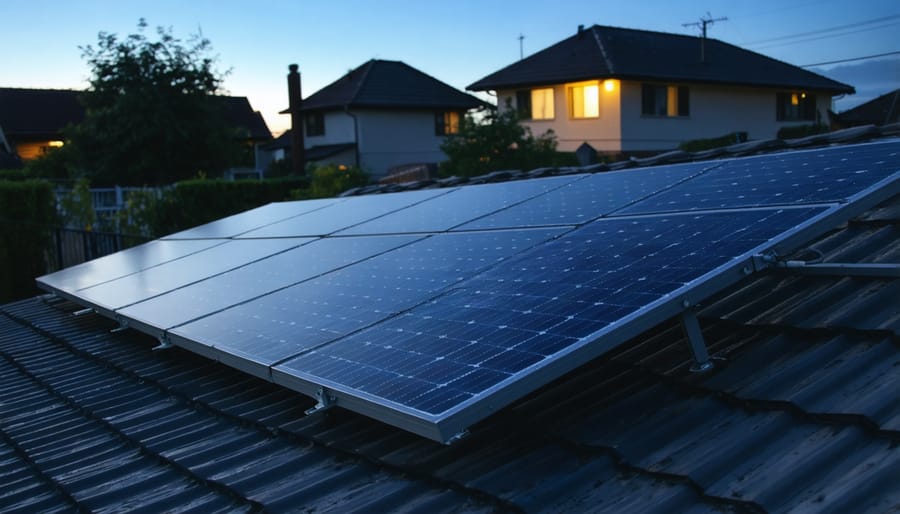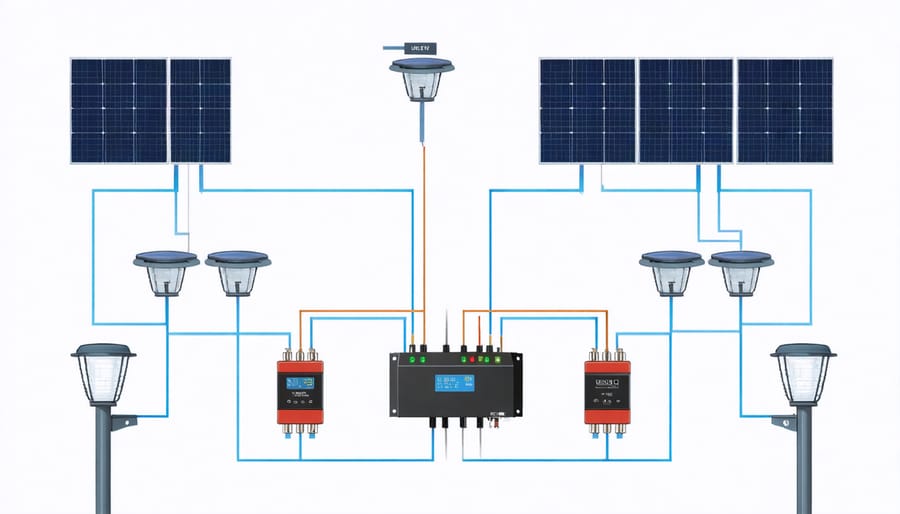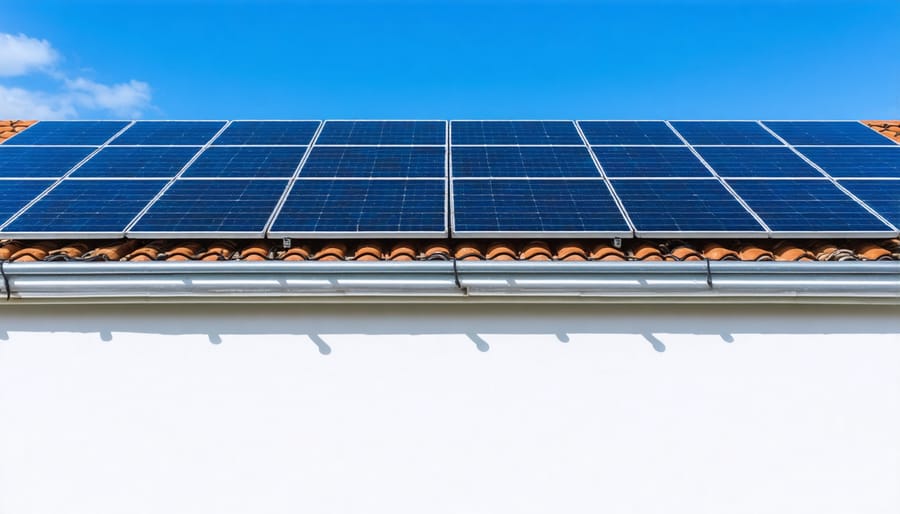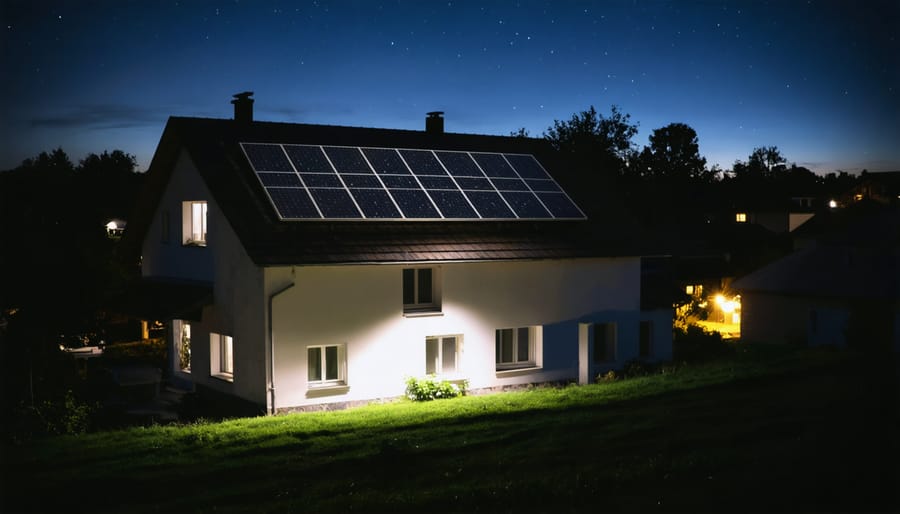Solar Emergency Lighting That Works When The Grid Fails
Power outages don’t have to leave you in the dark. Solar-powered backup systems represent a game-changing solution for modern homes and businesses, combining sustainable energy with reliable emergency power. These innovative emergency solar lighting solutions harness the sun’s energy to provide dependable backup power when traditional electricity fails.
Unlike traditional generators, solar backup systems operate silently, require minimal maintenance, and produce zero emissions while protecting your home from unexpected blackouts. By capturing and storing solar energy in high-capacity batteries, these systems ensure your essential appliances, security systems, and lighting remain operational during power disruptions.
The technology has evolved significantly, making solar backup more accessible and efficient than ever before. Modern systems can power entire homes, featuring smart monitoring capabilities that allow users to track energy production and consumption in real-time through smartphone apps. Whether you’re looking to maintain basic necessities during outages or achieve complete energy independence, solar backup provides a sustainable, cost-effective solution that pays for itself through reduced utility bills and increased property value.
Why Solar-Powered Backup Lighting Makes Sense
Grid Independence During Blackouts
One of the most compelling benefits of solar backup systems is their ability to provide grid independence during blackouts. Unlike traditional generators, solar backup systems continue working seamlessly when the main power grid fails, ensuring your essential appliances and lighting remain operational.
This independence is achieved through a combination of solar panels, batteries, and smart inverters. When the grid goes down, your system automatically disconnects from the utility lines and switches to off-grid mode. The solar panels continue collecting energy during daylight hours, storing excess power in the batteries for nighttime or cloudy day use.
Modern solar backup systems feature rapid switching technology that activates within milliseconds of a power outage, ensuring you experience virtually no interruption in power supply. Your refrigerator stays cold, security systems remain active, and critical medical equipment continues running without a hitch.
The level of backup power available depends on your system’s size and battery capacity, but many homeowners find they can power their essential needs indefinitely during extended outages, provided there’s sufficient sunlight.

Long-Term Cost Benefits
While the initial investment in a solar-powered backup system might seem substantial, the long-term financial benefits make it a smart choice for both homeowners and businesses. Most users see a complete return on investment within 5-7 years, after which the energy savings become pure profit.
The most immediate benefit is the reduction in monthly electricity bills, as your backup system can supplement your regular power usage during peak hours. Many users report savings of 30-40% on their energy costs within the first year alone. Additionally, solar backup systems increase property value, with studies showing an average increase of $15,000 to $20,000 in home value.
Maintenance costs are remarkably low, with most systems requiring only basic cleaning and occasional professional check-ups. Unlike traditional generators that need frequent fuel purchases and regular maintenance, solar backup systems operate essentially cost-free after installation.
Government incentives and tax credits can significantly reduce the initial setup costs, making the transition to solar backup even more financially attractive. Some states offer rebates covering up to 30% of the installation costs, dramatically shortening the payback period.

Essential Components of Solar Backup Lighting
Solar Panels and Collection
Solar panels are the heart of any solar backup system, and choosing the right type makes all the difference. Modern panels come in two main varieties: monocrystalline and polycrystalline. Monocrystalline panels are more efficient and work better in limited space, while polycrystalline panels offer a more budget-friendly option with slightly lower efficiency.
For optimal energy collection, panel placement is crucial. South-facing roof sections typically receive the most sunlight in the Northern Hemisphere, making them ideal locations. Aim for a roof angle between 30-45 degrees for the best year-round performance. Avoid areas where trees, buildings, or other structures cast shadows during peak sunlight hours.
Consider your climate when selecting panels. If you live in a hot region, look for panels with good heat tolerance, as high temperatures can affect efficiency. For snowy areas, panels with robust frames that can handle snow loads are essential.
Most residential backup systems work well with 4-12 panels, depending on your energy needs. Remember to factor in future expansion when planning your layout – it’s easier to add panels later if you prepare the space now.
Battery Storage Solutions
Modern solar battery storage systems come in several varieties, with lithium-ion batteries leading the pack due to their efficiency and longevity. These powerhouses typically last 10-15 years and require minimal maintenance compared to traditional lead-acid batteries.
When choosing your battery capacity, consider your daily energy needs and backup duration requirements. A good rule of thumb is to account for 1-2 days of backup power for essential appliances. For an average home, this might mean investing in a 10-20 kWh system.
Popular battery options include:
– Lithium Iron Phosphate (LiFePO4): Known for safety and longevity
– Lead-acid: Budget-friendly but requires regular maintenance
– Saltwater: Environmentally friendly with moderate lifespan
To maintain your batteries effectively:
– Monitor charge levels regularly
– Keep them in a temperature-controlled environment
– Clean terminals periodically
– Check for signs of wear or damage
– Schedule professional inspections annually
Remember that proper battery maintenance extends system life and ensures reliable backup power when you need it most.
LED Fixtures and Controls
LED fixtures are the perfect companion for solar-powered backup systems, offering exceptional energy efficiency and longevity. Modern LED bulbs use up to 90% less electricity than traditional incandescent lights while lasting up to 25 times longer. When paired with smart controls, these fixtures become even more efficient.
Consider installing motion sensors and daylight harvesting systems to automatically manage your lighting. Smart switches can be programmed to dim or brighten based on natural light levels, while occupancy sensors ensure lights only operate when needed. These controls not only conserve energy but also extend the life of your backup power supply.
For outdoor areas, solar-powered LED fixtures with built-in photocells offer hassle-free operation, automatically activating at dusk and turning off at dawn. Look for fixtures with adjustable brightness settings to maximize battery life during extended power outages.
Installation and Setup Guide
Planning Your System
Before installing a solar-powered backup system, it’s essential to carefully assess your lighting needs. Start by making a list of critical areas that require backup lighting during power outages. This typically includes main living spaces, hallways, staircases, and outdoor security areas.
Calculate your total power requirements by adding up the wattage of all lights you plan to power. For example, if you have ten 10-watt LED bulbs that need to run for 8 hours, you’ll need at least 800 watt-hours of daily capacity. Remember to factor in some extra capacity for cloudy days and unexpected extended usage.
Consider your geographical location and available sunlight hours when sizing your solar panels. A good rule of thumb is to multiply your daily power needs by 1.5 to ensure adequate charging capacity. For battery sizing, plan for at least 2-3 days of autonomy without sunlight.
Don’t forget to account for future expansion. It’s often more cost-effective to install a slightly larger system initially than to upgrade later. Also, consider seasonal variations in sunlight and adjust your calculations accordingly to ensure year-round reliability.

DIY Installation Steps
Before starting your DIY solar installation guide, ensure you have all necessary safety equipment, including gloves, safety glasses, and proper tools. Here’s your step-by-step installation process:
1. Choose Your Location
Select a south-facing area that receives maximum sunlight throughout the day. Clear any obstacles that might cast shadows on your panels. Ensure the mounting surface can support the system’s weight.
2. Mount the Solar Panels
Install mounting brackets according to manufacturer specifications. Secure the panels at a 30-45 degree angle for optimal sun exposure. Double-check all connections are weatherproof.
3. Install the Charge Controller
Place the charge controller in a dry, ventilated area near your batteries. Connect the controller to your solar panels, following the positive and negative terminal guides carefully.
4. Set Up the Battery Bank
Position batteries in a well-ventilated, temperature-controlled space. Connect batteries in series or parallel as needed for your system’s voltage requirements. Use appropriate cables and ensure tight connections.
5. Connect the Inverter
Mount the inverter close to the battery bank to minimize power loss. Connect the inverter to your batteries, maintaining proper polarity. Install a proper grounding system.
6. Final Connections
Wire your backup circuits through the inverter. Install disconnect switches for safety. Test all connections with a multimeter before powering up the system.
Safety Note: If you’re unsure about any step, consult a professional electrician. Always follow local building codes and obtain necessary permits before installation.
Remember to perform a complete system test during daylight hours and monitor performance for the first few days to ensure everything works correctly.
Maintenance and Troubleshooting
Routine Maintenance Tasks
To keep your solar backup system running efficiently, establish a regular maintenance schedule. Every month, wipe down solar panels with a soft cloth and clean water to remove dust and debris. Check battery connections for corrosion and ensure they’re tight. Monitor the battery’s charge level through your system’s display panel.
Quarterly maintenance should include inspecting all wiring for signs of wear or damage from weather exposure. Test your backup system by temporarily disconnecting from the main power to ensure smooth switching. Clean any ventilation areas around batteries and check that mounting hardware remains secure.
Annually, schedule a professional inspection to verify system components are working optimally. Have your batteries tested for capacity and replace them if necessary – typically every 5-10 years depending on usage and type. Update your system’s software if applicable, and trim any nearby vegetation that might shade your panels.
Keep a maintenance log to track when tasks are completed and note any unusual findings. This record helps identify patterns and predict when components might need replacement, ensuring your backup system is always ready when needed.
Common Issues and Solutions
Even the best solar backup systems can encounter occasional issues. Here’s how to address common problems you might face:
Battery not charging properly? First, check if your solar panels are clean and unobstructed. Dust, leaves, or shade can significantly reduce charging efficiency. Ensure all connections are tight and corrosion-free. If the problem persists, your charge controller might need recalibration or replacement.
Experiencing reduced backup time? This often indicates battery degradation. Most batteries last 5-10 years, but their capacity gradually decreases. Monitor your battery’s performance and consider replacement when capacity drops below 70% of original specifications.
System suddenly stops working? Check your circuit breakers and fuses first. Sometimes, a simple reset solves the issue. Also, verify that your inverter’s display shows normal operation. If you see error codes, consult your manual or contact a professional.
Poor performance during cloudy days? Consider adding more battery capacity or reducing your power consumption. Installing energy-efficient appliances and LED lights can help maximize your backup duration when sunlight is limited.
Remember to perform regular maintenance checks to prevent these issues before they occur.
As we’ve explored throughout this article, solar-powered backup systems offer a reliable, sustainable solution for keeping your lights on when conventional power fails. These systems not only provide peace of mind during emergencies but also contribute to reducing your carbon footprint and energy costs in the long run.
From understanding the basic components like solar panels and batteries to learning about proper installation and maintenance, you now have the knowledge needed to make informed decisions about implementing a solar backup system in your home or business. The initial investment may seem significant, but the long-term benefits – including energy independence, lower utility bills, and environmental protection – make it a worthwhile consideration.
Remember that every step toward sustainable energy solutions makes a difference. Whether you start small with a basic solar backup system for essential lighting or commit to a comprehensive whole-house solution, you’re contributing to a cleaner, more sustainable future.
Take action today by assessing your energy needs and consulting with qualified solar professionals. Many regions offer incentives and tax benefits for solar installations, making now an excellent time to invest in your energy independence. With proper planning and implementation, you can enjoy the security and satisfaction of knowing you have a reliable, clean energy backup system ready when you need it most.
Don’t wait for the next power outage to consider your backup power options – start your solar journey today.











